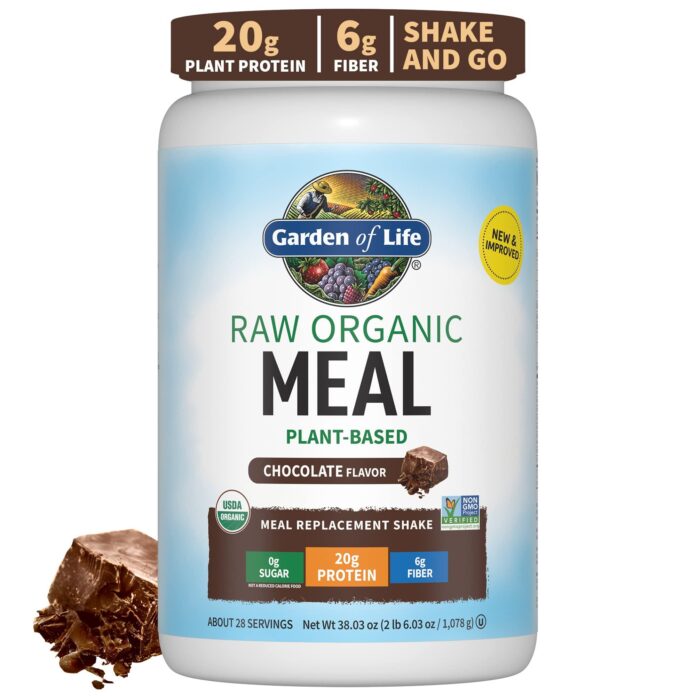In an age where convenience and nutrition are often at odds, meal replacements have emerged as a popular solution for those juggling busy lifestyles. With a plethora of options available, the debate between two primary formats—shakes and bars—has captured the attention of health aficionados and casual users alike. Each format boasts its own set of benefits, enticing flavors, and promises of nourishment on-the-go. But which one truly lives up to the hype? In this article, we delve into the pros and cons of meal replacement shakes and bars, exploring their nutritional profiles, practicality, and effectiveness. Join us as we unravel the question: which meal replacement format actually works better for your needs?
Exploring Nutritional Profiles: What’s Inside Your Shake and Bar
When evaluating meal replacement options, the nutritional profiles of shakes and bars reveal differing benefits that cater to diverse dietary needs. Shakes frequently enough boast a higher protein content, which can be crucial for those looking to build muscle or enhance satiety. Their liquid format allows for quick digestion, making them an ideal post-workout option. Common components found in protein shakes include:
- Whey or plant-based protein: Essential for muscle recovery and growth.
- Fiber: Frequently enough added to aid digestion and promote fullness.
- Vitamins and minerals: Enhanced formulations to support overall health.
On the other hand, bars tend to emphasize convenience and portability. They often contain a balance of macronutrients,making them suitable for on-the-go eating without compromising on taste.Key ingredients usually found in nutritional bars include:
- Whole grains: Providing sustained energy for longer periods.
- Nuts and seeds: Delivering healthy fats and added crunch.
- Natural sweeteners: Offering flavor without refined sugars.
| Component | Shakes (per serving) | Bars (per serving) |
|---|---|---|
| Protein | 20-30g | 10-15g |
| Fiber | 3-5g | 5-7g |
| Sugars | 2-5g | 5-10g |
| Calories | 200-300 | 150-250 |

Convenience and Portability: Which Format Fits Your Lifestyle
Meal replacements have become a staple for many people pursuing a healthy lifestyle, but the choice between shakes and bars frequently enough comes down to convenience and portability. If you lead a busy life, shakes can be a quick solution that requires minimal preparation. Just add water or milk, shake it up, and you’re good to go. They can easily fit into your gym bag or office drawer, making them an ideal choice for on-the-go nutrition. On the other hand, bars are compact and less messy, making them perfect for snacking while commuting or during a lunch break. Packed with essential nutrients, they can be carried in your pocket without the need for refrigeration.
When it comes to convenience, it also boils down to personal preference. Here’s a breakdown of some factors to consider when choosing between shakes and bars:
| Factor | Shakes | Bars |
|---|---|---|
| Preparation Time | Quick Mix | No Prep Needed |
| Storage | Requires container | Portable |
| Hydration | Can be a drink | Solid food |
| Satiation | Filling | Snackable |
Both options offer unique benefits to suit different lifestyles. Ultimately, your choice should align with your daily routine, preference for taste, and specific nutritional needs. Whether you opt for a shake or a bar, the aim is to enhance your dietary flexibility and nutrition on the go.

Satiety and Satisfaction: Does One Option keep You Fuller Longer?
When exploring the dynamics of meal replacements, the choice between shakes and bars frequently enough boils down to their impact on satiety—the feeling of fullness after eating. Shakes, typically high in liquid, can provide a more immediate sensation of satisfaction, as the volume of liquid fills the stomach and may lead to a greater feeling of fullness. However, the rapid digestion of liquid can sometiems mean that this feeling dissipates quicker than one might hope. in contrast, bars offer a chewier texture that necessitates more effort to consume, possibly slowing down the eating process and enhancing the overall experience.This prompt engagement with the food may translate to a lingering sense of fullness.
Numerous factors contribute to the perceptions of fullness and satisfaction between these formats. Consider the following aspects when assessing their effectiveness:
- Composition: Shakes often contain higher protein and fiber to aid in satiety.
- Texture: Bars may provide a more considerable texture, which can aid in the sensation of satisfaction.
- Portion Control: Shakes are often consumed quickly, while bars encourage slower eating.
- Ingredient Variety: Different flavors and ingredients can influence satisfaction levels significantly.
To illustrate these differences in satiety, the following table summarizes key attributes:
| Attribute | Shake | Bar |
|---|---|---|
| Texture | Liquid, smooth | Chewy, dense |
| Calories Per Serving | typically lower | Usually higher |
| Digestion Speed | Fast | Slow |
| Satiety Duration | Shorter | Longer |

Cost Considerations: Evaluating the Value of Shakes vs Bars
When considering meal replacements, the price tag can play a critically important role in your decision-making process, especially when comparing shakes and bars. Generally, shakes tend to offer a cost-effective option due to larger serving sizes and the ability to buy them in bulk. Many brands sell shakes in convenient multi-pack formats,often leading to a lower cost per serving compared to individual bars.However, the nutritional value and brand quality should also inform your choice. Here are some factors to consider:
- Bulk Purchase Savings: Buying shakes in larger quantities can reduce overall spending.
- Long Shelf Life: Shakes often last longer than bars, minimizing waste.
- Nutritional Content: Assess the price per gram of protein or other nutrients for a fair comparison.
On the other hand,meal replacement bars often provide greater convenience,especially for those with busy lifestyles. They are portable and require no preparation, which can be a significant appeal for individuals on the go. The cost per bar can sometimes be higher, yet they may balance out in terms of time saved. It is essential to evaluate not just the upfront cost, but also value over time, factoring in your lifestyle, dietary needs, and meal frequency.A quick cost breakdown can help:
| Format | Average Cost per Serving | Convenience Level |
|---|---|---|
| Shakes | $1.50 | Moderate (requires mixing) |
| Bars | $2.00 | High (grab-and-go) |
The Way forward
As we draw the curtain on our exploration of shakes versus bars in the realm of meal replacements, it becomes evident that there is no one-size-fits-all answer to the question at hand. Each format presents its own unique set of advantages and challenges, catering to different lifestyles, preferences, and nutritional needs.Whether you lean towards the creamy indulgence of a shake or the convenient crunch of a bar, the best choice ultimately hinges on your individual circumstances, goals, and taste buds.
In a world saturated with options, the power lies in informed decision-making. Experiment with both formats, listen to your body, and perhaps most importantly, enjoy the journey toward a healthier you. After all, the effectiveness of any meal replacement isn’t just in its packaging, but also in how well it fits into your daily routine and enhances your overall well-being.So,the next time you find yourself at the crossroads of “Shake vs Bar,” remember: the right path is the one that empowers you to nourish your body and savor every bite along the way.



